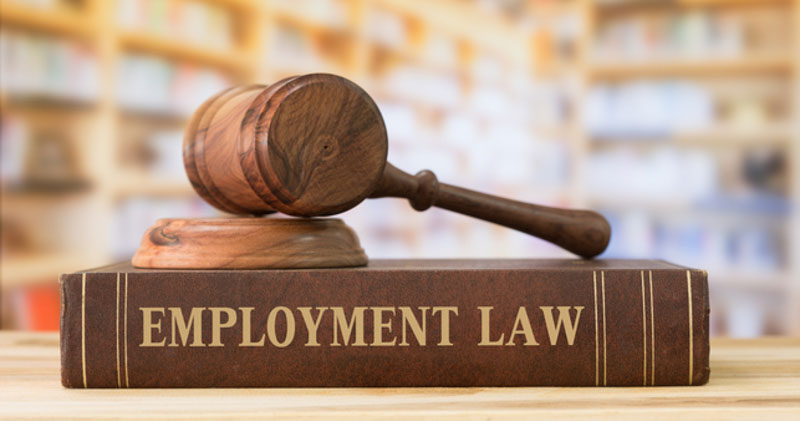
What Is The Employment Law In Australia?
As an employer, you have an obligation to comply with all aspects of Australian employment law and ensure your employees can work comfortably in a safe and secure environment – free of bullying, discrimination, and harassment.
The main sources of employment law in Australia are
legislation (federal, state and territory laws);
industrial instruments; and
the common law.
The Fair Work Act 2009 is arguably the most important piece of employment law in Australia. It provides the minimum terms and conditions for the majority of employees in Australia that are covered by the national workplace relations system. The National Employment Standards (NES), contained in the Fair Work Act 2009 set out 10 minimum entitlements which apply to most employees in the private sector.
However, it is not the only piece of workplace relations legislation in Australia, as it is supplemented by other federal, state and territory laws, nor does it apply to every workplace in Australia. For example, Western Australia maintains its own state-based workplace relations system that partially covers the private sector in that state.
It is necessary to know what workplace relations system covers your business and your employees, to determine what legislation applies. If the national workplace relations system applies, your business may be covered by an industrial instrument such as a modern award, enterprise agreement or other registered agreement which sets out additional minimum employment conditions that apply to a particular industry or occupation above and beyond the National Employment Standards.
Why Legislation Is Important In The Workplace
There is legislation that applies to all national system employers across Australia – in other words, to most employers in Australia. This is regardless of territory, states, business model or industry.
The objective of this legislation is to place responsibility on the employer to ensure that their employees are treated fairly and are receiving the minimum employment rights and entitlements for the industry they work in and the job they do within that industry – including minimum pay, leave entitlements, redundancy, periods of notice for termination, and more.
Here is a list of some of the most important workplace relations legislation that governs industrial relations and employment relationships in Australia:
State and Federal anti-discrimination laws
Privacy Act 1988
Get Workplace Advice Now
Call Our Team of Advisers Who Will Help You with Your Workplace Questions.
What Are The Different Types Of Legislation?
Below are a few examples of some of the legislation relating to employment in Australia.
Fair Work Act 2009
The purpose of this act is to establish the parameters of the employment relationship between an employer and an employee. The act serves to provide a safety net of minimum entitlements such as a national minimum wage increase, and the National Employment Standards (the NES) with further employment conditions and entitlements set out in Modern Awards or enterprise or other registered agreements.
It enables flexible working arrangements, provides protection from unfair dismissal and contains general protections provisions which ensure employees are treated fairly and protected from discrimination The act also creates bodies that have administrative and enforcement roles within the national workplace relations system, for example the Fair Work Commission.
Under Australian employment law, the terms of the Fair Work Act 2009 apply to businesses of all types, sizes, and industries across Australia.
However, there are a few exemptions to this. For example, in Western Australia the following types of business would not be covered by the Fair Work Act:
Sole traders
Partnerships
Other unincorporated entities
Non-trading corporations
State And Federal Anti-Discrimination Laws
The Fair Work Act can help protect employees from discrimination, but even if an employee is no longer employed, there are multiple acts within Australia that are aimed at helping protect people from discrimination and harassment that is relevant to employment. . There is legislation at a Federal level that protects people from race, sex, disability and age discrimination. This is governed by the Australian Human Rights Commission.
In addition to the Federal laws each state and territory have their own anti-discrimination and harassment legislation that protects employees, and prospective employees, in the workplace depending on the circumstances of the complaint. The purpose of this legislation is to protect employees against all forms of discrimination – this includes age, gender, marital status, race, religion, sexual orientation and more. Workplace Health and Safety Acts can provide protection from bullying.
Work Health And Safety Act 2011
This is a set of model Workplace Health and Safety (WHS) laws that need to implemented by the Commonwealth and each individual state and territory to become legally binding. The model WHS laws have been implemented (with some individual modifications) in the Australian Capital Territory, New South Wales, the Northern Territory, Queensland, South Australia, Tasmania and the Commonwealth, and was adopted by Western Australia in 2021.
The model act provides a framework to protect the health, safety, and welfare of all employees at work. It also protects the health and safety of other people who may be associated with the workplace such as customers, visitors, and the general public.
From provisions allocating duties pertaining to the management and control of risks, incident reporting and consulting of workers, to enforcement through fines and penalties, this workplace health and safety legislation covers a wide range of employer obligations, which are aimed at the safety, security and comfort of employees. The act has a specific provision pertaining to workplace bullying. Workplace bullying is considered a risk to health and safety because it may affect the mental and physical health of workers.
Disability Discrimination Act 1992
(This is covered in state and federal anti-discrimination laws above)
The Disability Discrimination Act is is designed to protect everyone, including employees from discrimination based on their disability, and so it is part of employment law in Australia
Under this act, it is illegal to treat an employee less fairly because they have a disability. This also extends to employees who have relatives, friends, co-workers, or associates of a person with a disability.
What the act considers to be a ‘disability’ applies to not only physical disorders but also intellectual, sensory, neurological, and psychiatric disorders as well.
For this reason, it is important to remember you cannot discriminate against candidates and new hires based on their disability, and that you must – as far is reasonably practicable– accommodate a disabled employee.
What Rights Do Employers Have In The Workplace?
As an employer, you have few rights other than to expect employees to carry out their duties to a reasonable standard, follow reasonable management directions, and abide by their contract and workplace policies and procedures. However, you have a number of obligations and responsibilities towards your employees under the Fair Work Act and other industrial relations legislation.
Some of the most important responsibilities to consider include:
provide a safe working environment
protect all employees from bullying, discrimination, and sexual harassment
provide employees with the correct pay and entitlements
record keeping obligations
give all employees the necessary training, resources, and mentoring they need to work safely and efficiently
inform all employees of their rights and responsibilities
train employees on potential hazards and safety risks in the workplace
meet first aid requirements
report workplace incidents and injuries to Safe Work Australia
supply protective clothing and equipment for employees and ensure they know how to use them correctly
To stay informed of your rights and responsibilities as an employer, seek advice from a workplace relations specialist. They can inform you about your current rights and update you on changes to legislation that may apply to your business.
Frequently Asked Questions
What Is The Purpose Of Employment Legislation?
The purpose of employment legislation is to regulate the employment relationship between employer and employee. It generally also provides a framework to resolve any disputes between employers and employees that may arise.
What Is The Fair Work Act 2009?
The Fair Work Act 2009 provides the minimum standard of employment conditions and entitlements for most employees in Australia. It sets out the rights and responsibilities of employees and employers, as well as unions and other employee organisations. It provides protection from unfair dismissal and enables flexible working arrangements and fairness at work and prevents discrimination against employees.
Who Does The Fair Work Act Apply To?
The Fair Work Act applies to most private sector employees in Australia, except for those under their respective state-based or territory-based workplace relations system. It also provides aframework of industrial instruments that contain additional employment conditions depending on the employer industry or employee occupation ie.modern awards, enterprise and other registered agreements., further terms and conditions of employment can be set out in employment contracts.
What Is The Main Objective Of The Work Health And Safety Act 2011?
The main objective of the Work Health and Safety Act 2011 is to provide for a balanced and nationally consistent model framework to secure the health of workers and safety of workplaces.
What Is The Current WHS Act In Australia?
In Australia, there is a federal model Work Health and Safety Act 2011, but workplace health and safety (WHS) laws are also the responsibility of the states and territories. Starting from 2012, most states implemented harmonisation with regards to WHS laws; this means that the legislation is mostly the same across states and territories However, as of 2021, Victoria is the only state to have not harmonised their WHS laws.
BrightHR helping you manage your people and business
Contact us to find out how BrightHR people management software can help you manage and store your essential employee records and documents.
The information in the above article has been compiled on the basis of general information current at the time of publication. Please note that the contents of this article and website and any information provided by our Fair Work Help Line do not constitute legal advice and are not intended to be a substitute for legal or other professional advice and should not be relied upon as such. Your specific circumstances or changes in circumstances after publication may affect the completeness or accuracy of this information. You should seek legal advice or other professional advice in relation to any particular matters you or your organisation may have. To the maximum extent permitted by law, we disclaim all liability for any errors or omissions contained in this information or any failure to update or correct this information. It is your responsibility to assess and verify the accuracy, completeness, currency and reliability of the information on this website, and to seek professional advice where necessary. Nothing contained on this website is to be interpreted as a recommendation to use any product, process or formulation or any information on this website. For clarity, Employsure does not recommend any material, products or services of any third parties.









